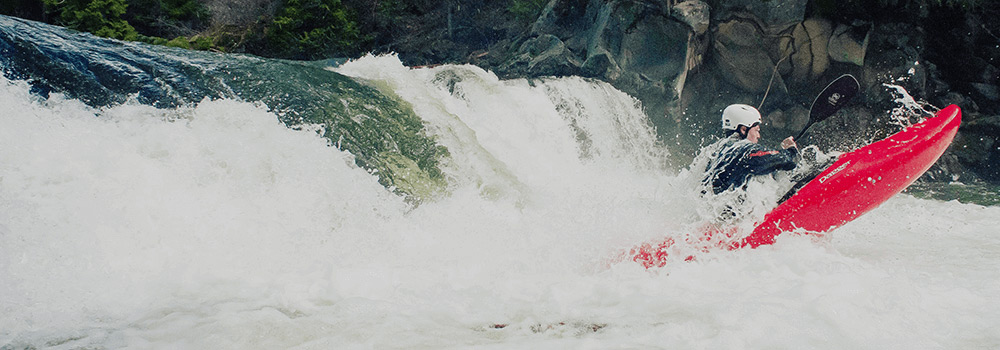Rolling the Kayak
Rolling the kayak intimidates many people. If you stop to consider, the endeavor is a
considerable challenge, and unique in sports. Learning the skill requires dealing with not being
able to see or hear clearly, not to mention being upside down, trapped, and unable to breath. To
many people, these conditions are a non-starter. If you are nervous, but really want to learn this
skill, which is essential to progressing in the sport, take it slow, learn how to get in and out of the
boat on dry land, and build your level of comfort with the boat and the equipment before you hit
the water. If you maximize your familiarity with everything prior to being in the water upside
down, and unable to breath, knowing you can easily escape goes a long way toward calming
your nerves and allowing you to focus on the task at hand.
You need to learn to roll because eventually you are likely to find yourself upside down,
especially when you are learning to kayak. This is one of things that is challenging about
kayaking, you have to learn and master this skill in order to progress to the next level. The roll is
mostly about body movement. The ultimate goal is to be able to roll from any position, mastering
the harmony between the four main ingredients: hip snap, core rotation, head position, and point
of leverage.
In order to learn the basics, many instructors break the roll down into segments that can
be more easily understood, especially since communicating with a student when they are
upside down is exceedingly difficult.
Step 1: line up your paddle, parallel, alongside your boat.
Step 2: staying in this position roll upside down. The paddler should give themselves a moment
to come to rest in this position before moving into Step 3. Reaching both hands toward the sky,
out of the water if possible, can often be helpful when trying to ensure a solid setup.
Step 3: Move the paddle into a position, with the blade on top of the water if possible, that forms
a forty-five degree angle between paddler and boat. This is the position you want to be in right
before you do the most significant body motion.
Step 4: Sweep the blade toward the stern, back and down through the water. The other arm is
bent, kind of like a T-Rex, close to the boat with the paddle blade resting on the hull. (I know,
this is confusing) Watching, reading, and listening in combination can help build a more holistic
understanding of the skill. At the same time you are sweeping the blade backwards, you should
snap your hips. The hip snap is similar to the motion that you would go through if you were to
dive to your left or right, one knee would drive across the body, and the energy of the motion
would help propel the body through the air.
Key Points:
● Why: you are upside down!
● What: Mostly about body movement, which includes a hip snap, rotation of your
core, proper head position, and finally point of leverage, i.e. paddle position.
● Challenge: The entire endeavor is a real challenge, you are half blind, mostly
deaf, upside down and disoriented. Plus you cannot breath.
● Goal: You eventually want to be able to roll the kayak from any position quickly
● Tip: Make sure your head is the last thing out of the water by keeping your ear
pressed against your shoulder.

